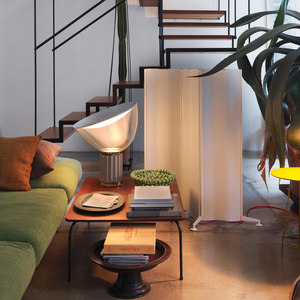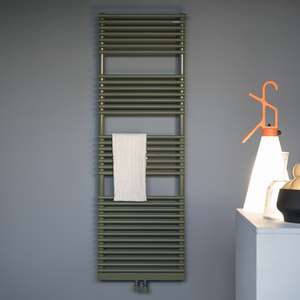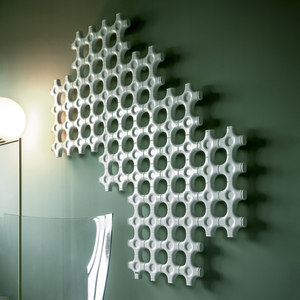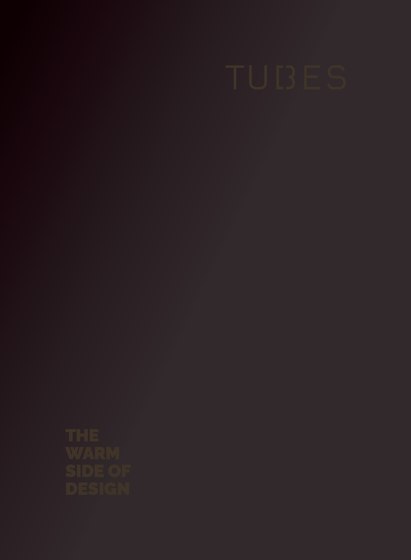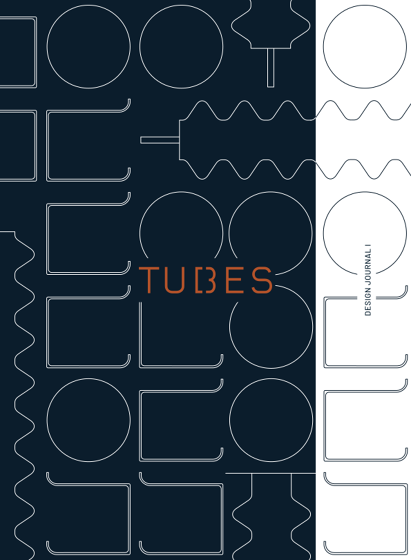About TUBES
MORE ABOUT TUBES
Established in 1992, Tubes is a truly one-of-a-kind case history in the radiator and heated towel rail industry, owing to the major focus on styling and formal innovation which has distinguished it since its market début, marking it out as a strongly innovative and dynamic concern in terms of product approach.
Tubes company headquarters are situated in Resana, in the province of Treviso, and all production takes place in-house. Made in Italy is one of the key values of the corporate philosophy, along with innovation, experimenting in shapes and technology, fine craftsmanship and superior quality.
Tubes has experimented incessantly since its establishment, revolutionising the concept of the radiator, turning it into an icon of design capable of defining the architectural space.
Milestones in Tubes progress and the three collections in its catalogue: Basics, Elements and Plug&Play
Ever since the onset in 1992, the brand has demonstrated its outstanding ability to accommodate market requirements and interpret certain gaps that needed to be filled. Up until then, radiators were seen as a purely functional object that needed to be hidden from view. Tubes was able to fill this gap, focusing on innovation and giving rise to intense research and experimentation both in terms of processes and materials used, as well as from a styling perspective. Thanks to Tubes, radiators have become a styling priority in the definition of settings.
The progress made by Tubes was rapid and marked by milestones which have ranked it as a pioneer in its industry.
The first step is the Basics collection created in 1994 which is still part of the brand catalogue today.
As early as the initial models, it is possible to notice the constant focus on the formal aspect and the painstaking care for details, such as the invisible welds on the tubes. Another aspect worth mentioning is the attention placed on water consumption levels and heating efficiency, from the onset.
Over the years, impeccable styling has become a more important focus point, giving the radiator body the personality of an item of interior décor.
The genuine cornerstone in Tubes history is nevertheless the creation of the
Elements collection in 2004 which, under the artistic direction of Ludovica Serafini+Roberto Palomba, presents an actual revolution in the radiator industry. In this collection the brand expresses a new concept of the heating element, turning it into an icon of design. The company invites internationally- renowned designers (Antonia Astori, Matteo Fiorini, Stefano Giovannoni, Elisa Giovannoni, Peter Jamieson, Alberto Meda, Nicola De Ponti, Satyendra Pakhalé, Elisa Ossino as well as Ludovica Serafini+Roberto Palomba themselves) to reinterpret the radiator as an element of the architectural structure, brimming with a strong personality, thanks also to the customisation and modularity possibilities.
The Elements collection also came about thanks to a major technological innovation: the GVR (which stands for "gruppo valvole a collegamento remoto", that is remote connection valve assembly).
The crucial feature of this concept is the possibility of placing the valves up to 6 metres away from the radiator body: having removed the technical part, the valve and lockshield, the designer is thus free to design a radiator which no longer looks anything like one. Thanks to this technical novelty, the first free- standing radiators were created, such as Milano, which forms the epitome of what up until that point had been the unprecedented freedom of positioning the radiator anywhere in a setting.
This basic format has given rise to genuine iconic models, architectural feature elements that have been elevated to works of art and are on display in international venues such as the Venice Biennale or included within the permanent collections of some of the most important design museums in the world: from the Centre Pompidou in Paris to the International Design Museum in Munich.
2018 marks another significant milestone for Tubes. In addition to the ongoing development of the Elements collection, a new phase began with the presentation of the Plug&Play collection. This product line introduces an innovative idea of portable designer heating, aimed at the concept of ‘personal heat’ rather than the traditional wall-mounted architectural heating element. The distinguishing feature of this collection is the combination of portability and designer styling, without the need for installation, allowing for total flexibility in both positioning and use.
Tubes recently introduced the market to the concept of “heating accessories”, objects designed to deliver well-being and enhanced comfort, thereby confirming its commitment to innovation and to accommodating new lifestyles.
Tubes has expanded its international presence with a branch in France and actively collaborates with a large number of professionals all over the world. Recognised for its ability to offer considerable freedom of expression and to accommodate the most varied design needs, the brand embraces a tailored approach to heat. Its products are used in a wide range of industries, including hospitality and the nautical sector.
Established in 1992, Tubes is a truly one-of-a-kind case history in the radiator and heated towel rail industry, owing to the major focus on styling and formal innovation which has distinguished it since its market début, marking it out as a strongly innovative and dynamic concern in terms of product approach.
Tubes company headquarters are situated in Resana, in the province of Trevis...
MORE ABOUT TUBES
Collections by TUBES
Catalogues by TUBES
-
2022
english, deutsch, italiano, español, français

Design Book
TUBES
95 pages
-
2024
english, deutsch, italiano, español, français

Design Journal
TUBES
pages
-
2021
english, deutsch, italiano, español, français

Plug & Play Collection
TUBES
43 pages
TUBES product references
TUBES articles
TUBES news
TUBES fairs
TUBES videos
-
Dots. by Tubes - Design Ludovica Serafini + Roberto Palomba
TUBES
2024-05-08
Dots. by Tubes - Design Ludovica Serafini + Roberto Palomba
× -
JJ by Tubes - Design Ludovica Serafini + Roberto Palomba
TUBES
2024-05-08
JJ by Tubes - Design Ludovica Serafini + Roberto Palomba
× -
Design Book - The Warm Side of Design
TUBES
2022-03-24
-
TUBES | MILANO/totalcolour
TUBES
2024-05-08

